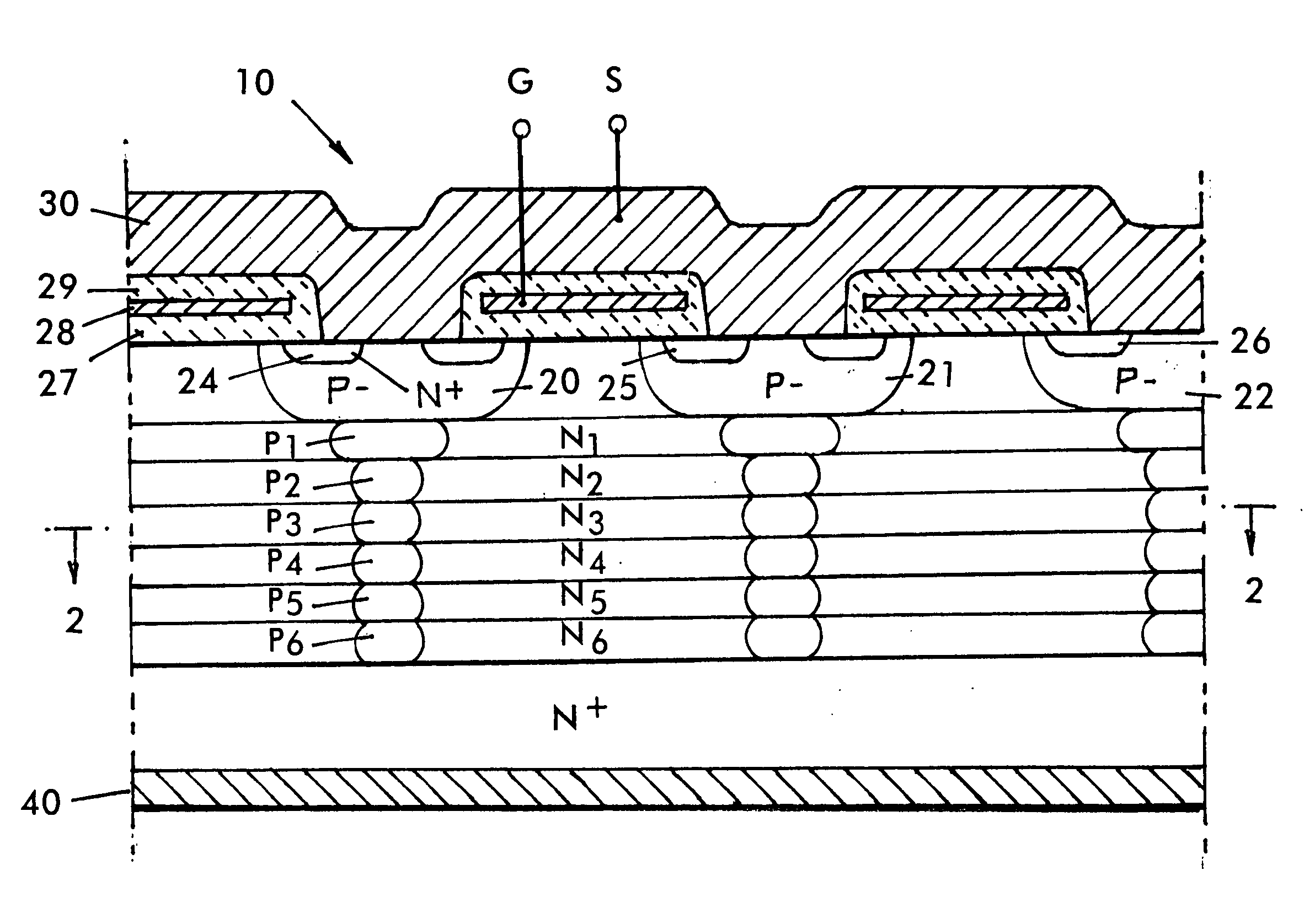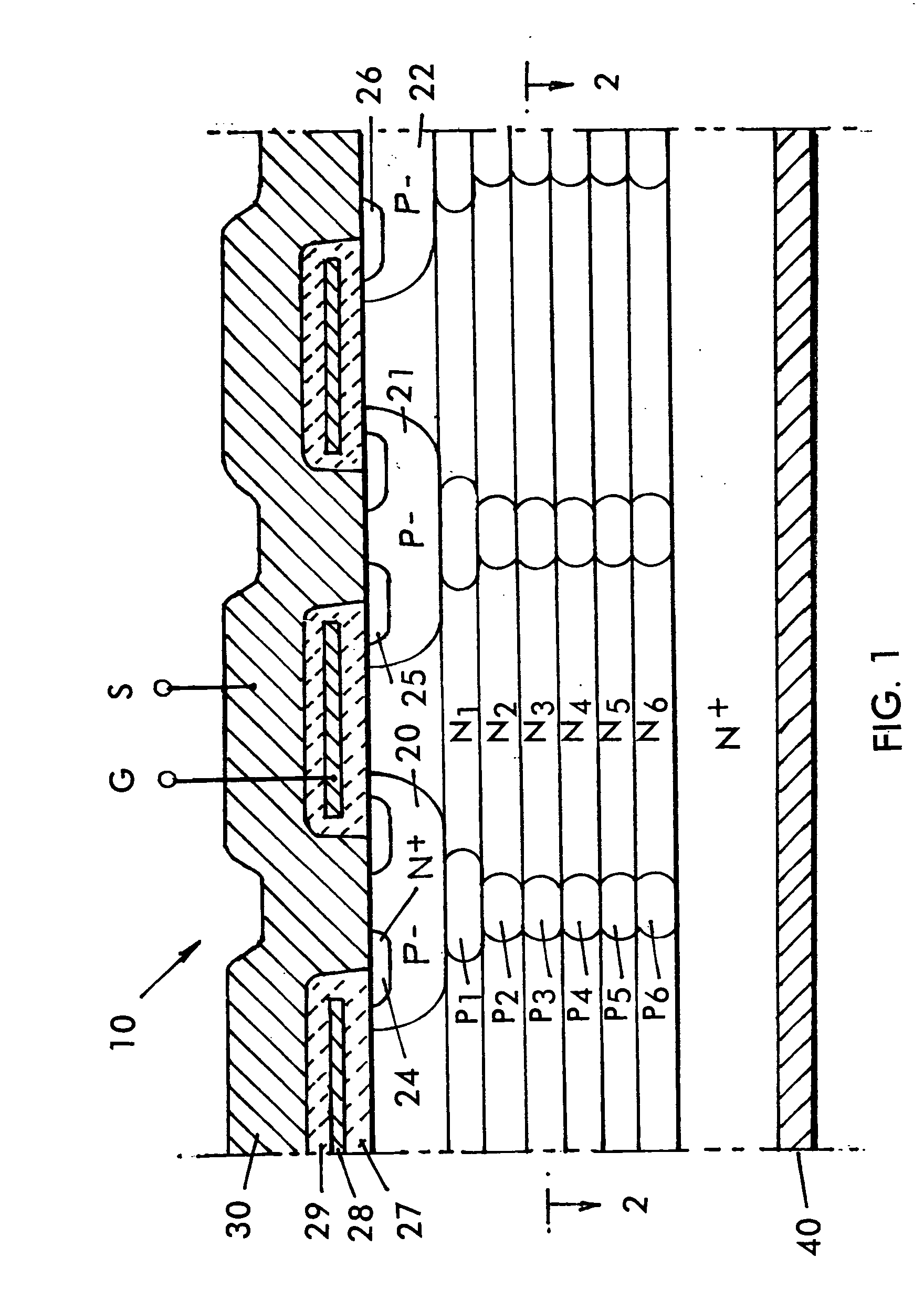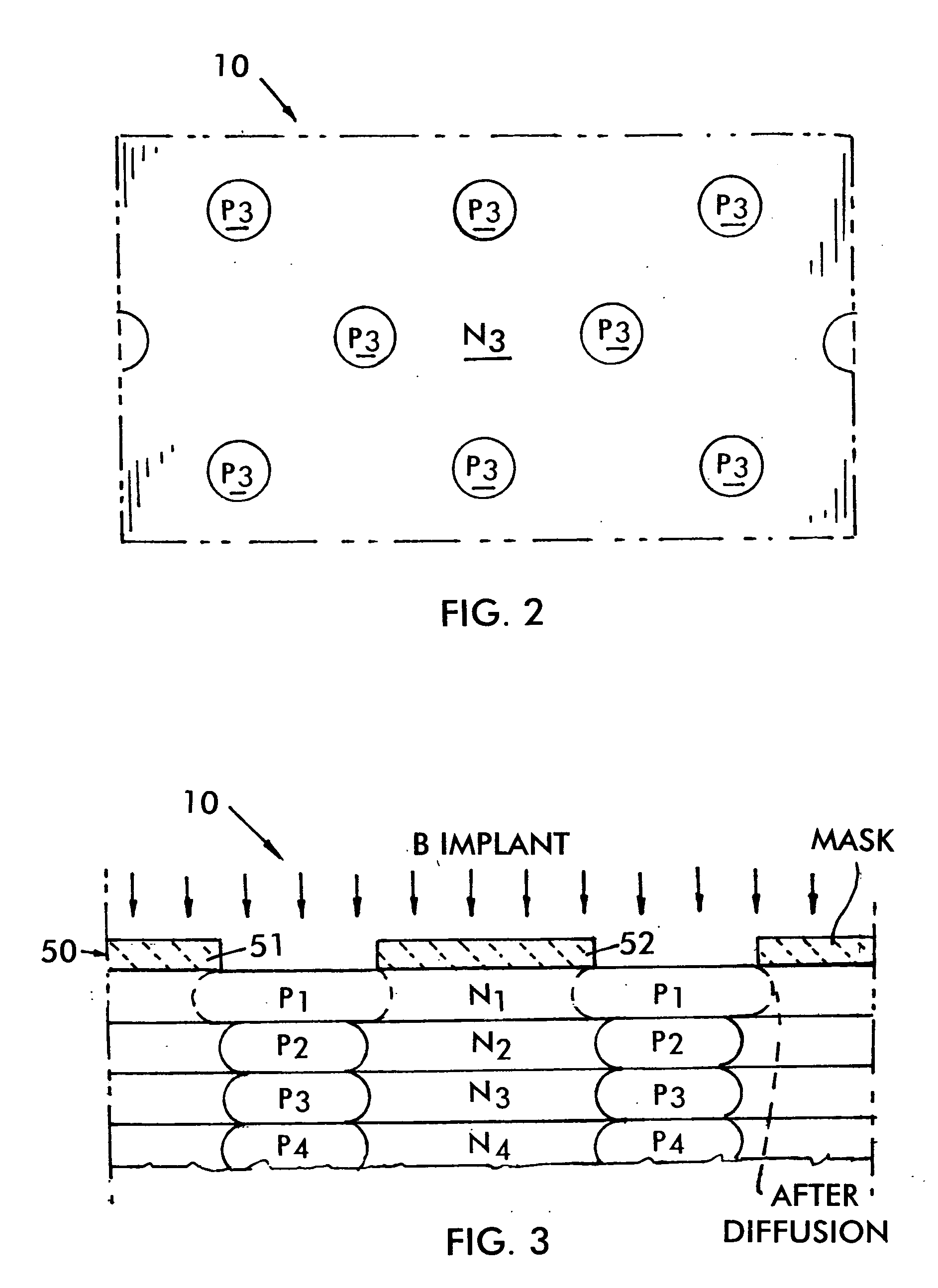Superjunction device with improved ruggedness
a superjunction device and rugged technology, applied in the direction of semiconductor devices, basic electric elements, electrical equipment, etc., can solve the problems of reduced ruggedness and high bv
- Summary
- Abstract
- Description
- Claims
- Application Information
AI Technical Summary
Benefits of technology
Problems solved by technology
Method used
Image
Examples
Embodiment Construction
[0010] Referring to FIGS. 1 to 3, a silicon wafer (sometimes referred to as a die or chip) is formed of an N+ wafer 10 which receives a series of epitaxial layers N6 to N1 which are sequentially formed. After the formation of each layer, an implant and diffusion is carried out to form P regions (P6 to P1 respectively). In the prior art, the implant and diffusions are identical in size and concentration and which are charge balanced to the surrounding charge of layers N6 to N1 respectively, which are each of the same concentrations.
[0011] Each of P regions P6 to P1 are aligned to one another to form a continuous column or “pylon”.
[0012] A MOSgated structure is then formed atop each column, shown in FIG. 1 as P channel regions 20, 21 and 22 which conventionally receive N+ source regions 24, 25 and 26 respectively. A gate oxide 27 is deposited over the inversion areas of each of channel regions 20, 21 and 26 respectively and a conductive polysilicon gate 28 is formed over each of gat...
PUM
 Login to View More
Login to View More Abstract
Description
Claims
Application Information
 Login to View More
Login to View More - R&D
- Intellectual Property
- Life Sciences
- Materials
- Tech Scout
- Unparalleled Data Quality
- Higher Quality Content
- 60% Fewer Hallucinations
Browse by: Latest US Patents, China's latest patents, Technical Efficacy Thesaurus, Application Domain, Technology Topic, Popular Technical Reports.
© 2025 PatSnap. All rights reserved.Legal|Privacy policy|Modern Slavery Act Transparency Statement|Sitemap|About US| Contact US: help@patsnap.com



